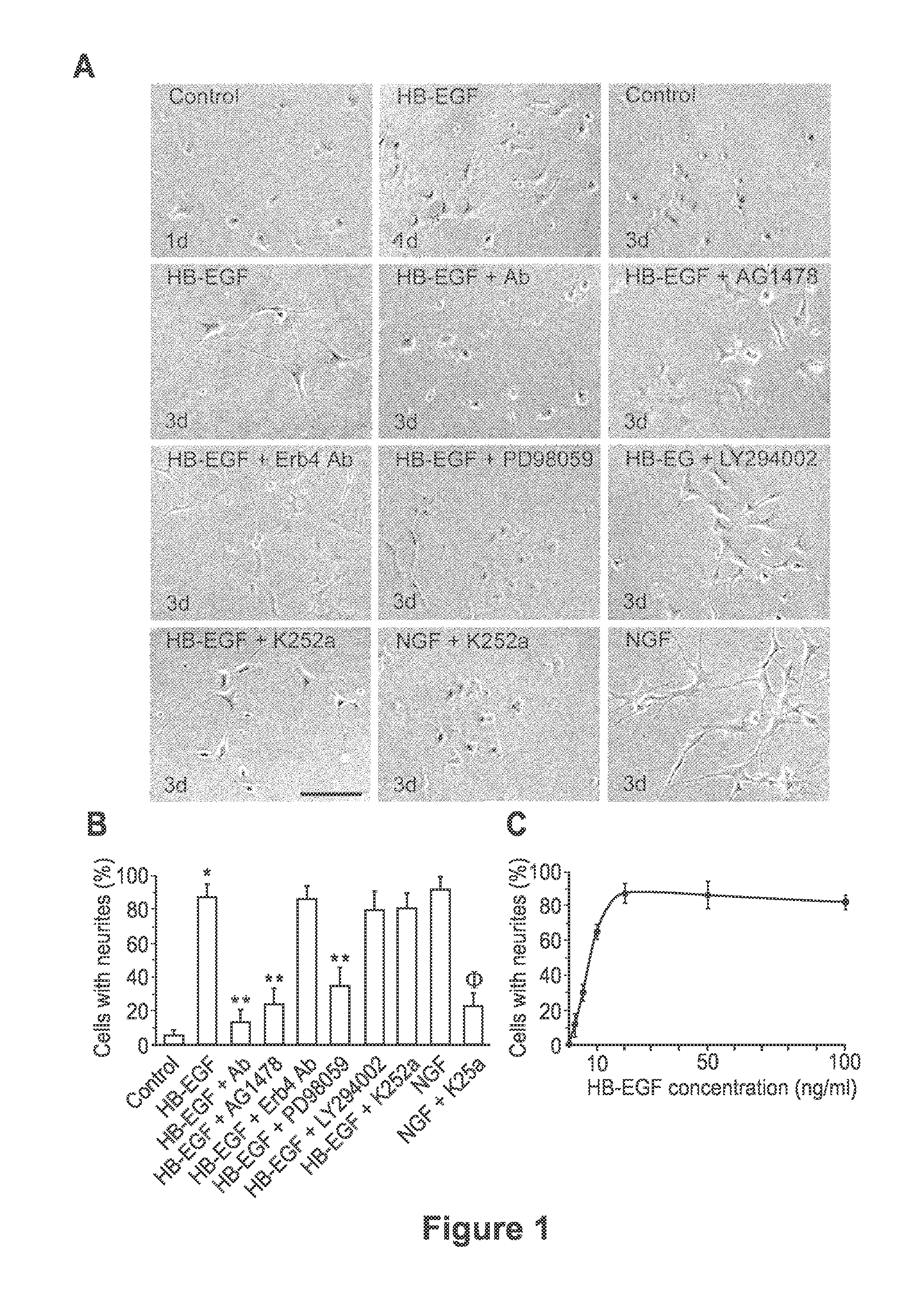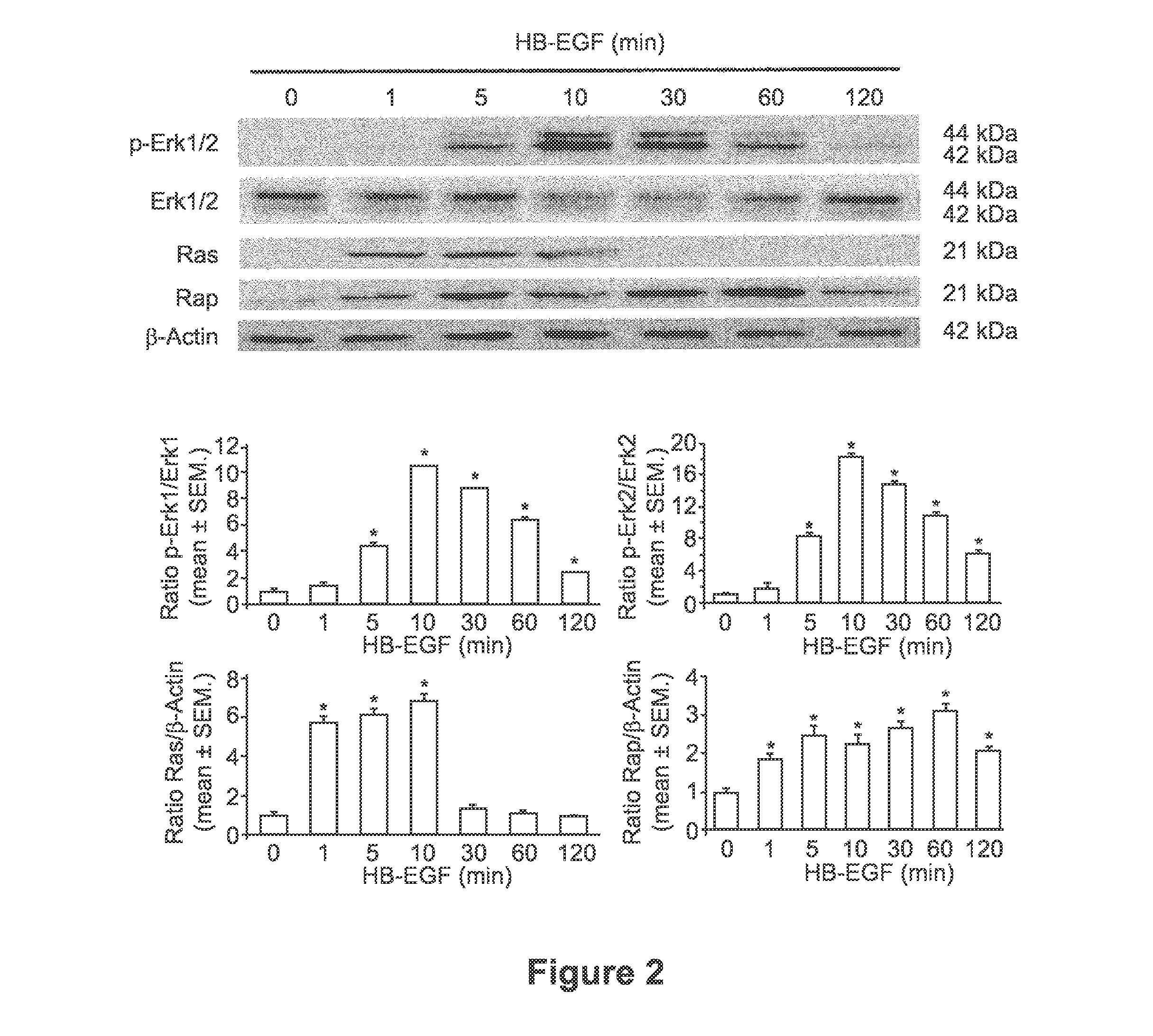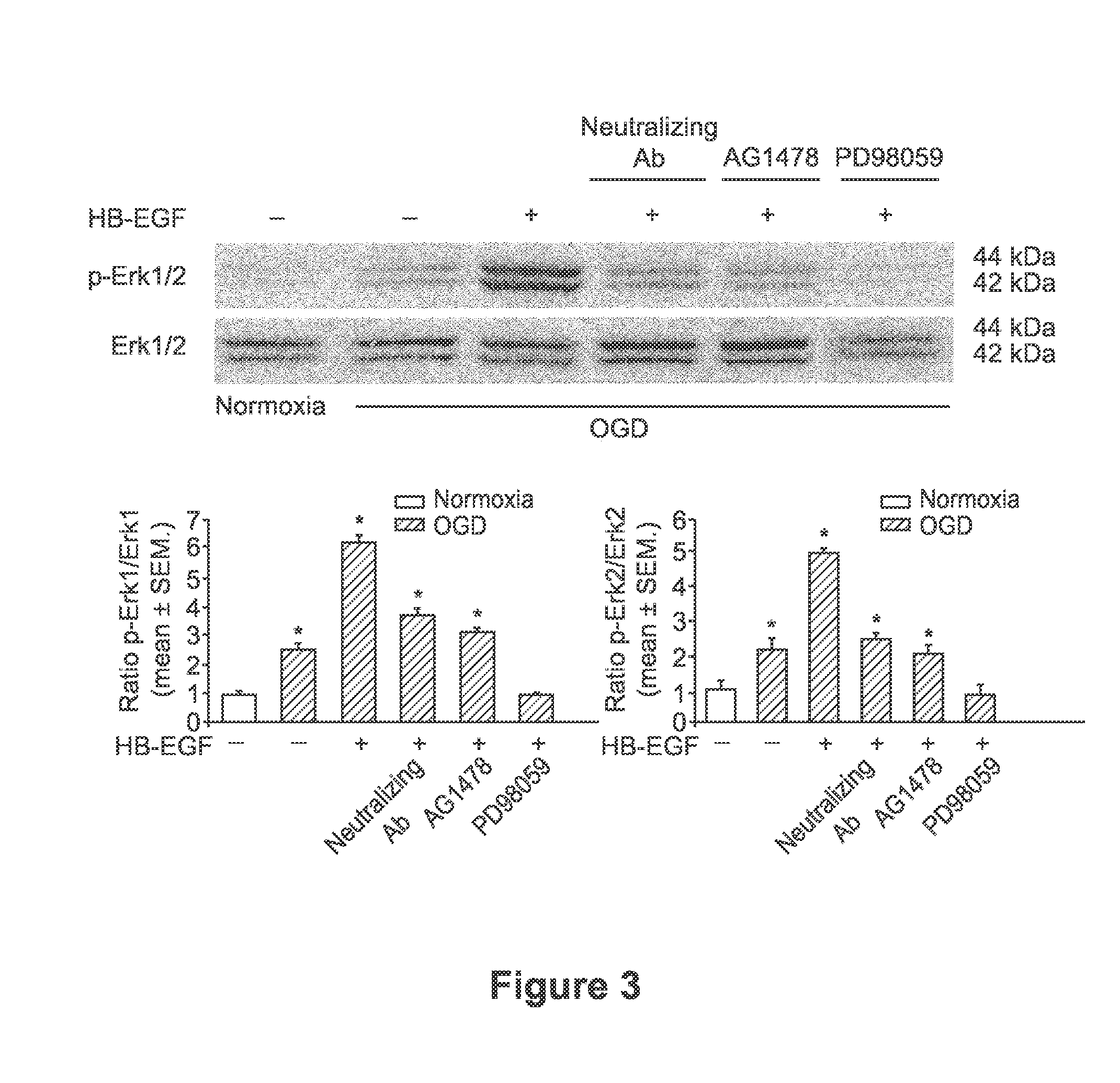Administration Of Heparin Binding Epidermal Growth Factor For The Protection Of Enteric Neurons
a technology of epidermal growth factor and enteric neurons, which is applied in the direction of peptides, drug compositions, peptides, etc., can solve the problems of significant morbidity and impaired intestinal motility, and achieve the effects of promoting post-injury intestinal motility, reducing intestinal dysmotility, and reducing intestinal dysmotility
- Summary
- Abstract
- Description
- Claims
- Application Information
AI Technical Summary
Benefits of technology
Problems solved by technology
Method used
Image
Examples
example 1
Neonatal Rat Model of Experimental Necrotizing Enterocolitis
[0072]The studies described herein utilize a neonatal rat model of experimental NEC. These experimental protocols were performed according to the guidelines for the ethical treatment of experimental animals and approved by the Institutional Animal Care and Use Committee of Nationwide Children's Hospital (#04203AR). Necrotizing enterocolitis was induced using a modification of the neonatal rat model of NEC initially described by Barlow et al. (J Pediatr Surg 9:587-95, 1974). Pregnant time-dated Sprague-Dawley rats (Harlan Sprague-Dawley, Indianapolis, Ind.) were delivered by C-section under CO2 anesthesia on day 21.5 of gestation. Newborn rats were placed in a neonatal incubator for temperature control. Neonatal rats were fed via gavage with a formula containing 15 g Similac 60 / 40 (Ross Pediatrics, Columbus, Ohio) in 75 mL Esbilac (Pet-Ag, New Hampshire, Ill.), a diet that provided 836.8 kJ / kg per day. Feeds were started at ...
example 2
HB-EGF Induces Neurite Outgrowth
[0077]Neurite outgrowth represents a morphological change in neuronal tissue that results in synaptic formation both during development and during the axon pathfinding that occurs after nerve injury (Kyoto et al. Brain Res; 1186:74-86., 2007). The ability of HB-EGF to affect neurite outgrowth in PC12 cells was investigated. HB-EGF-induced PC12 cell differentiation, as demonstrated by significant neurite outgrowth extension as early as 1 day after HB-EGF addition (FIG. 1A).
[0078]To measure neurite outgrowth, 4×103 PC12 cells were seeded in each well of an 8-well culture slide chamber coated with poly-D-lysine and lamine (BD Biosciences, Bedford, Mass., USA) and starved with serum free DMEM for 16 hours. After addition of HB-EGF (20 ng / ml) or NGF (50 ng / ml positive control), cells were incubated for an additional 24 hours and 72 hours, and random photographs were taken for quantification of neurite outgrowth. Other agents such as AG1478 (1 mmol; selecti...
example 3
HB-EGF Increases MAP1B Protein Expression
[0082]Microtubule associated protein 1b (MAP1b) is a neuronal cytoskeletal marker with predominant expression in the developing nervous system, which is frequently used as a marker for neuronal cell sprouting (Keating et al., Dev Biol; 162:143-531994; Goold et al., J Cell Sci; 114:4273-84, 2001; Fischer et al., Mol Cell Neurosci; 2:39-51, 1991; Mansfield et al., J Neurocytol; 20:1007-22, 1991). PC12 cells were treated with HB-EGF (20 ng / ml) for 24 hours, followed by immunocytochemical detection of MAP1b using anti-MAP1b monoclonal antibodies.
[0083]PC12 cells were seeded in 8-well culture slides coated with poly-D-lysine / laminin and were incubated with or without HB-EGF (20 ng / ml). After 24 hours, cells were fixed with 4% paraformaldehyde in 0.1M PBS for 30 minutes, and blocked with 10% goat serum, 0.1% Triton X100 / PBS for 30 min. After incubation with primary antibody (anti-MAP1b mAb) (Sigma, Saint Louis, Mich., USA) for 2 hours, cells were r...
PUM
| Property | Measurement | Unit |
|---|---|---|
| weight | aaaaa | aaaaa |
| weight | aaaaa | aaaaa |
| thickness | aaaaa | aaaaa |
Abstract
Description
Claims
Application Information
 Login to View More
Login to View More - R&D
- Intellectual Property
- Life Sciences
- Materials
- Tech Scout
- Unparalleled Data Quality
- Higher Quality Content
- 60% Fewer Hallucinations
Browse by: Latest US Patents, China's latest patents, Technical Efficacy Thesaurus, Application Domain, Technology Topic, Popular Technical Reports.
© 2025 PatSnap. All rights reserved.Legal|Privacy policy|Modern Slavery Act Transparency Statement|Sitemap|About US| Contact US: help@patsnap.com



